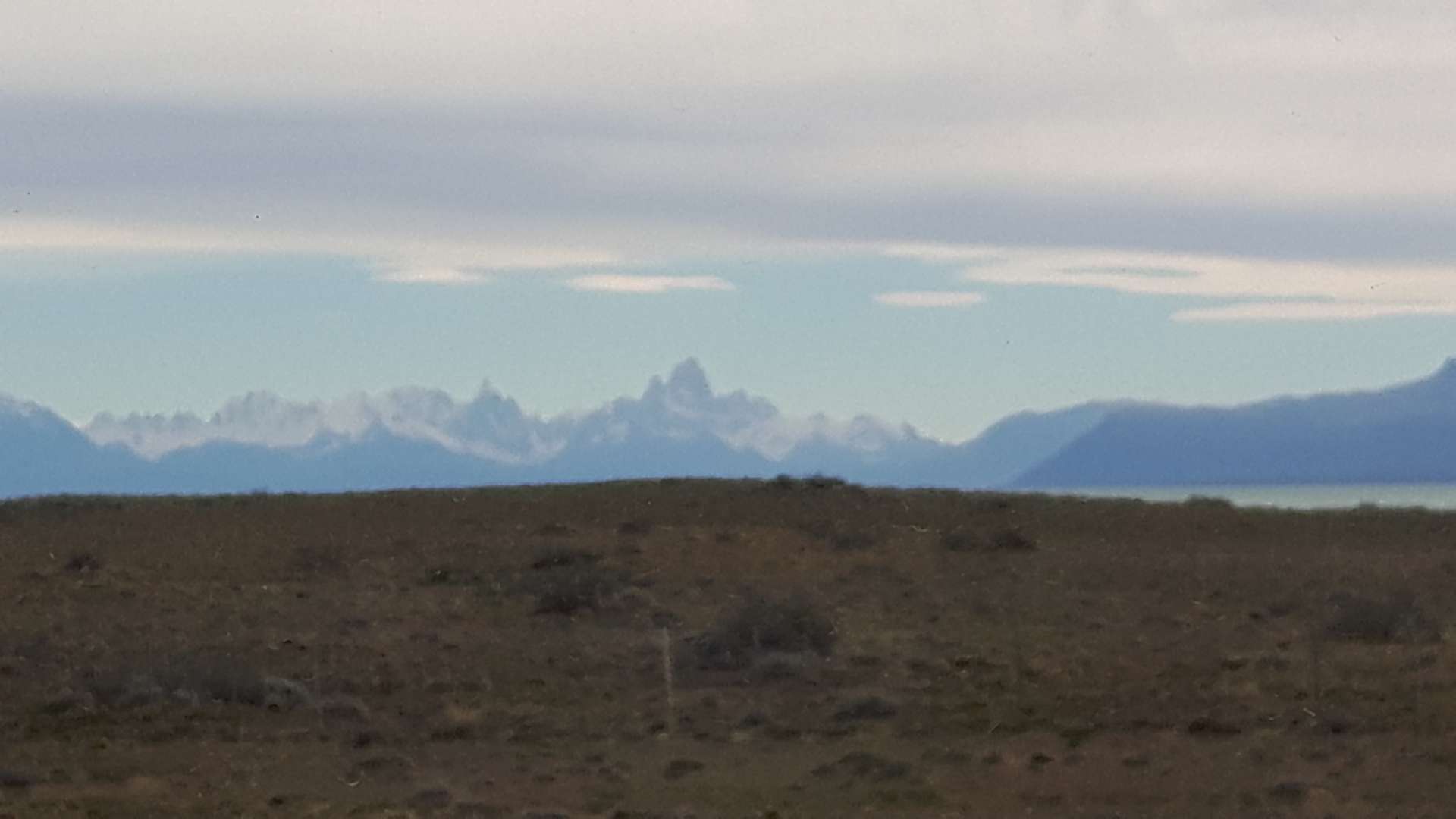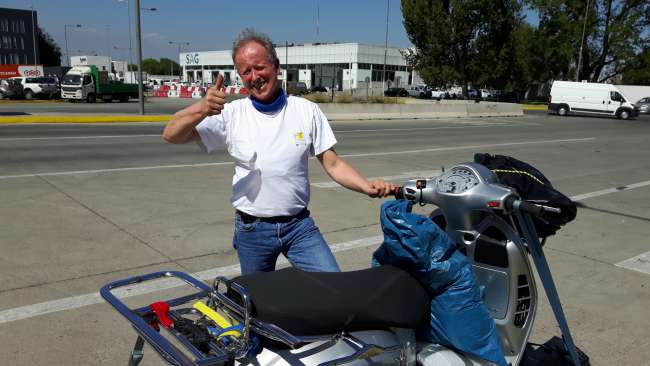On 07.08.: Nazca - 600 m & the phenomenon of the Nazca Lines
Publicado: 10.08.2017
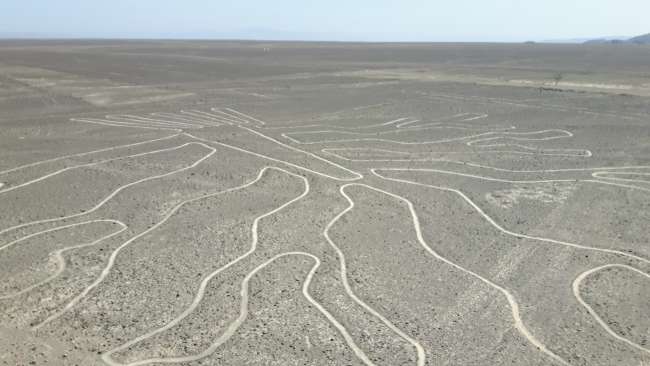
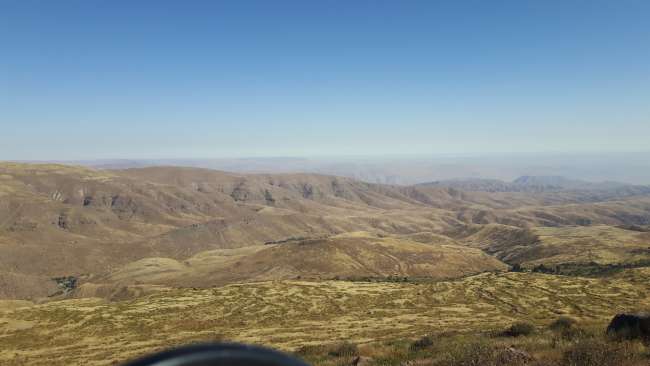
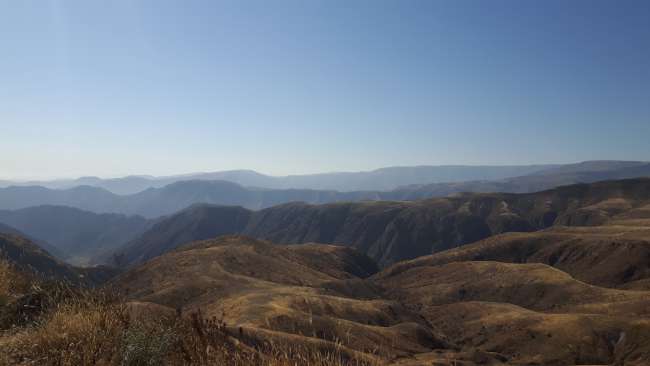
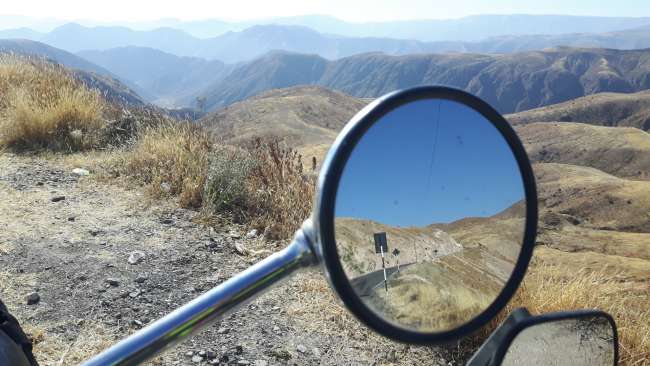
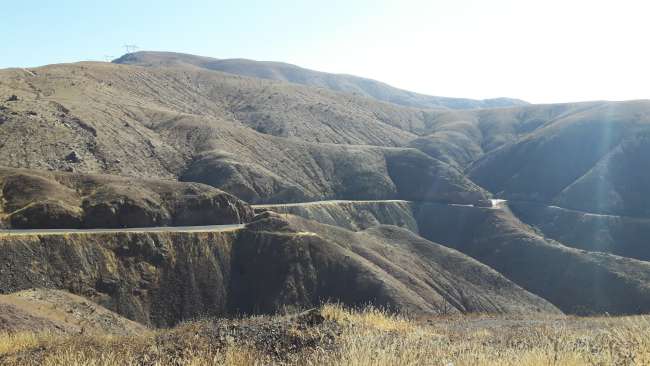
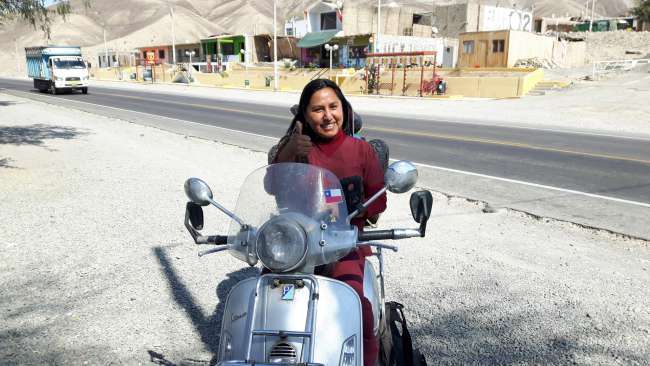
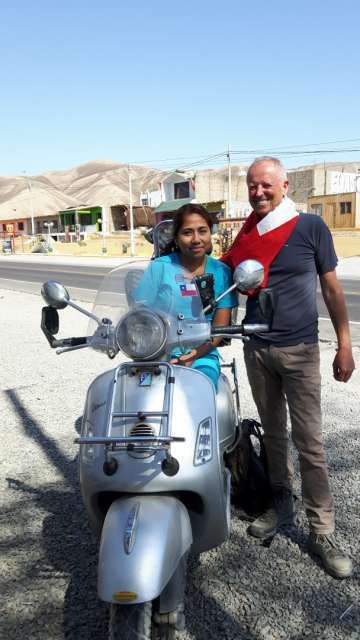
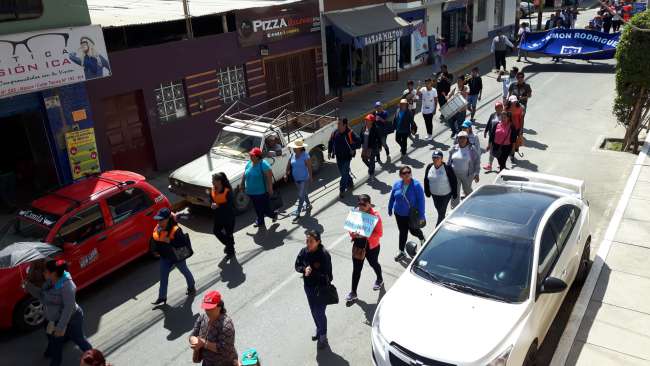
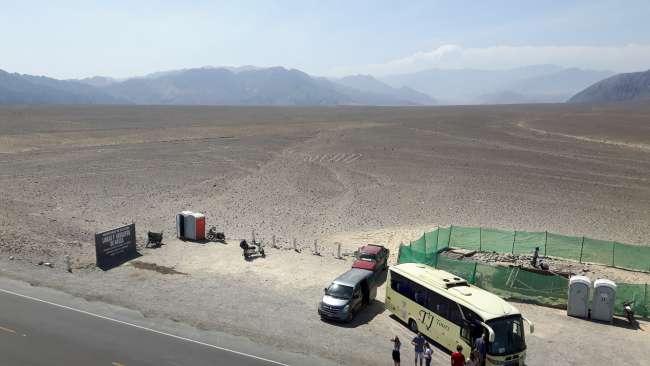
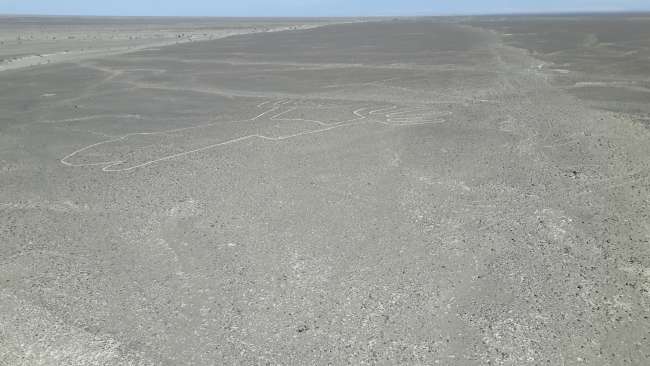
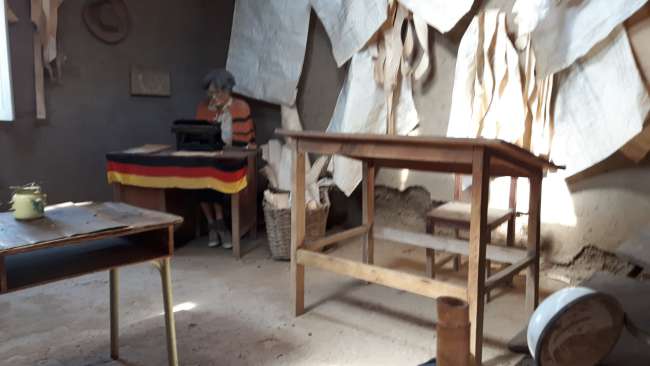
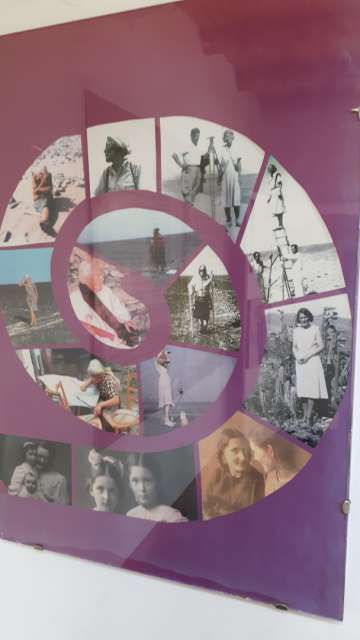
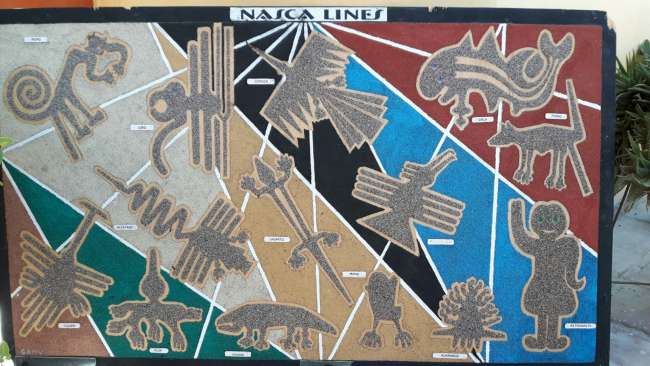
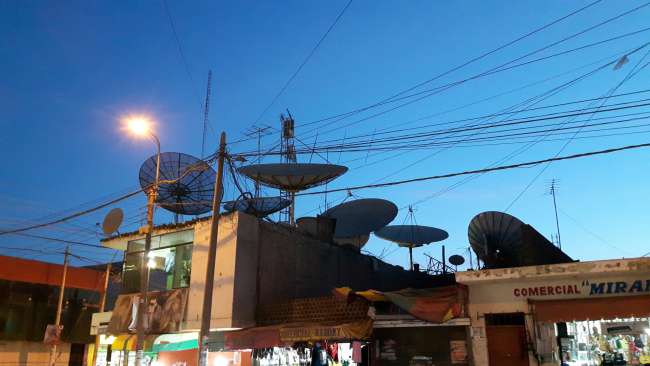
Willakuy qillqaman qillqakuy
07.08.
Once again, I will climb up to 4,250 m, and then a long descent of 600 meters awaits me.
Well-prepared and with two new clamping rings in my toolbox, I set off. And once again, I notice that the Vespa only loses km/h when we approach the 4,000 m threshold. Maybe I should be more daring with the jets and experiment a bit?
Today, I want to go to Nazca and take few breaks.
The morning will be dominated by similar images as yesterday on my pendulum journey between 4,200 and 4,500 meters: alpacas, tufted grass, lunar soil, snow-covered peaks of 6 to 7 thousand meters on the horizon - we make good progress, the stretches are long and there are hardly any switchbacks. We are back on the plateau, which is not as finicky as yesterday's. We're making good progress. A long break for mandarins, honking and waving trucks, many of which I already know because we have practiced overtaking each other.
However, in the afternoon, I cannot avoid various stops anymore, simply because the Andean world is unique. And as soon as I pack away my phone and the next curve comes, I have to stop again because the scene, mood, and lighting have changed.

This can't be true: is this the western Pacific?
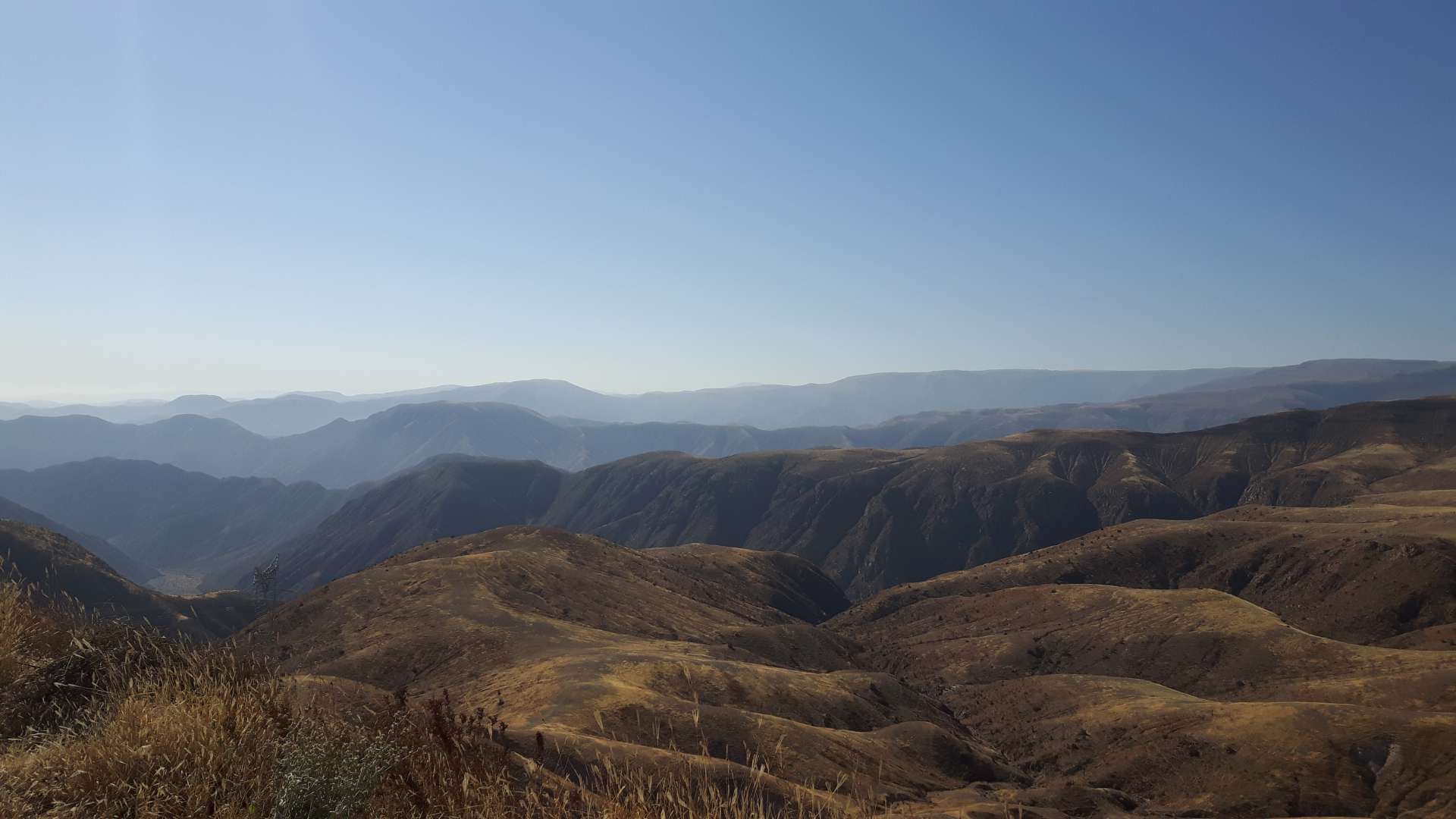
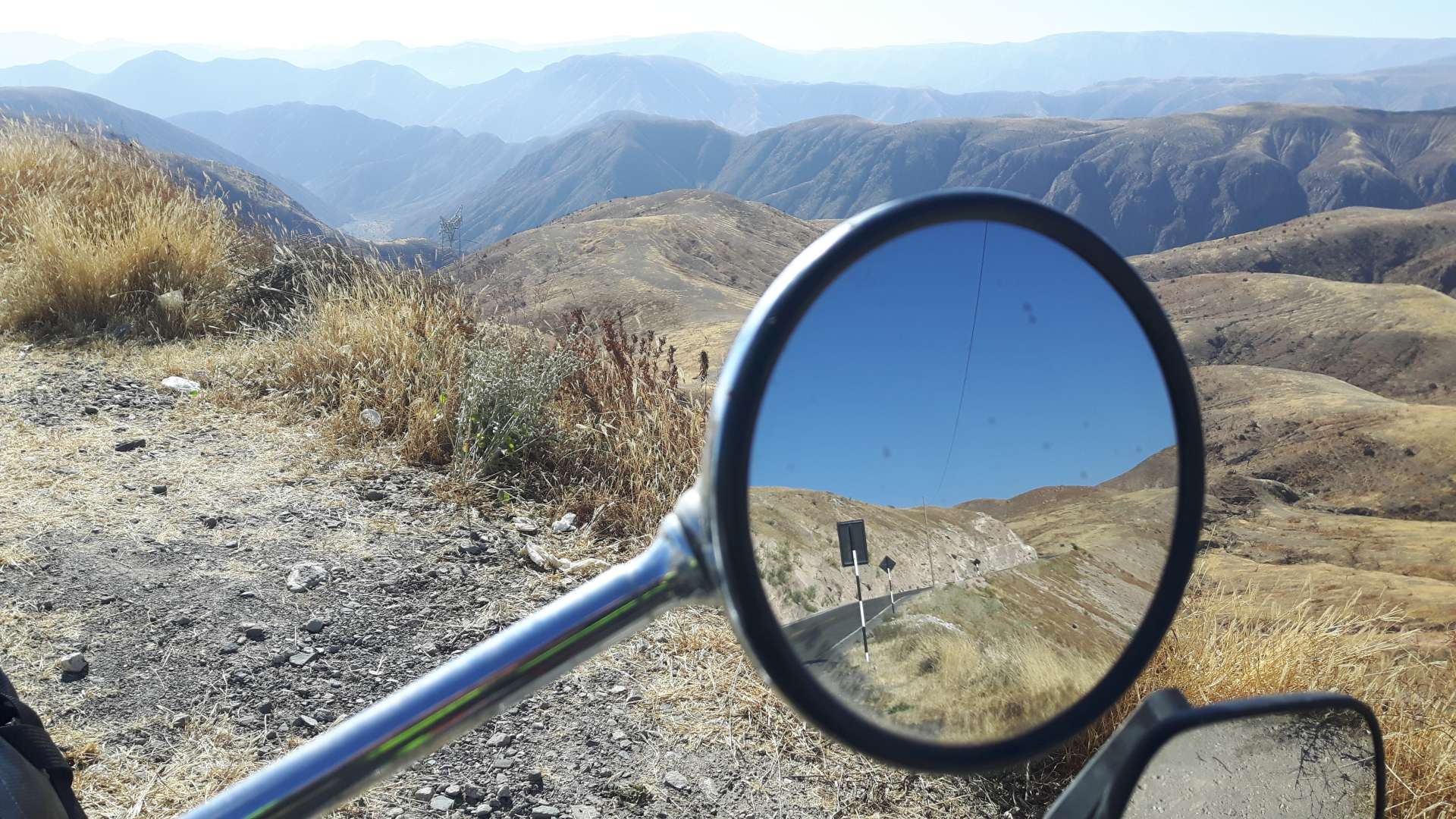
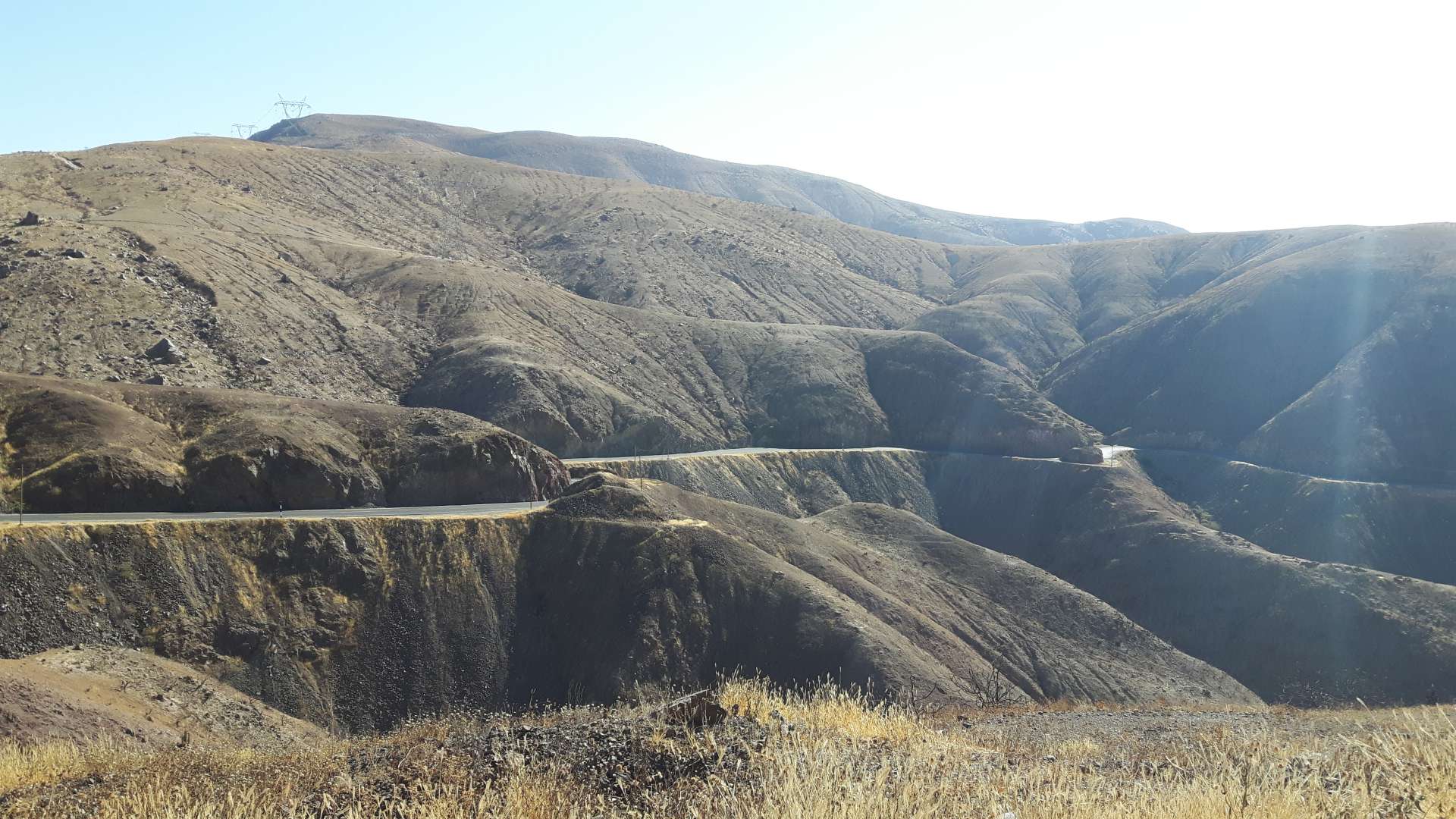
As soon as I reach about 1,000 meters in altitude, the jet is replaced by a 96.
The effect is phenomenal! I can feel it as soon as I start. No struggling to get going, but almost like a young foal that can't wait to transition from trot to the eagerly awaited gallop.
Of course, I let myself be tempted and quickly pass the familiar truck drivers.
Nasca, a city of 23,000 inhabitants, welcomes me in the afternoon light. It is surrounded by inhospitable desert rock but the city itself appears friendly with green leafy trees and colorful fruit wagons on the streets, thanks to its location at the mouth of the Nasca River.
I am quickly led to a hostel, which I don't recognize immediately. I take a moment to rest, turn off the engine, and take in my surroundings.
It's warm, the tourists - of which there are not many - walk around in shorts, and it doesn't take long before two Brazilians notice the Vespa and want to know everything about it. But I'm more hungry and in the mood for a solid address than having to answer the same questions over and over again. However, this meeting has one good aspect: they came from São Paulo by car and thus know the Transoceanic Highway, which I will also drive when heading east. I can already sense a tendency to exaggerated storytelling with my question, but the second person in the group takes over and gives a somewhat factual answer. Paved road? Yes. Potholes? Yes. Driving at night? No - I hadn't planned on that anyway. But it's a long way until I get there. And the Andes are soooo high... I can reassure them by telling them that I have already driven through the Andes from Cusco to Nasca. Nice farewell.
The first hostel is fully booked, but the second one has enough space. When the hostel owner hesitates and seems unsure when stating the price, I take advantage of his uncertainty like a cat at the mouse hole and negotiate it down to 40 sol, with the agreement that the Vespa can be parked in the foyer. The room is immaculate and bright! Although it is located on a busy road, I will endure it for the three nights.
I cannot use the kitchen for breakfast on the rooftop because it belongs to a lady, but it's still better than having breakfast in my room where there is no table.
The journey has taken a toll on me - a quick dinner, some writing, and then I sleep so deeply that I only wake up at around 06:00 due to noise on the street. The roosters start crowing a little later.
08.08.
I fall asleep again and wake up at 10:00. I have my muesli breakfast on the rooftop and find out where the source of the crowing is located. I look at a flat roof with a row of fairly large cages. The pigeons feast on the feeding stations, and I observe someone carefully taking a rooster out of his cage. They seem to know each other, the rooster is peaceful and even lets him caress his neck. But what makes him special is that he simply looks amazing. His feathers shine in the sun and shimmer in various colors. What does the future hold for him? Will I soon hear a louder crowing and his life is extinguished? Or are there cockfights in the area for which he is being made fit? I still don't have an answer.
I spend the day in my room, sleeping and writing. The missionary clinic has captivated me and requires a lot of time.
Later, I go next door to eat a pizza. The owner asks about my nationality, and when paying, I receive the bill for being a gringo. 35 sol for a vegetarian pizza. This would be cheap back home, but here it is bold and expensive!
Today, the Nazca Lines are on the agenda.
As I'm leaving my room, I hear drums and trumpets, and eventually see a demonstration of teachers escorted by the police.
They are not satisfied with the negotiation result and continue to strike.

Every school carries its school flag and fights for a better education system - for higher salaries and reimbursement for teaching materials. The strike has been going on for over 6 weeks
Regarding the Nazca Lines, I live up to the origin of my first name. It is hard for me to believe that they are already almost 2,800 years old, considering that they are said to have been created as early as 800 BC.
The fact that they could be formed into images by hand over such large areas, that perfectly straight, 20 km long lines, which also intersect or run parallel at certain angles, were created by human hands, seems unfathomable. Especially since the area covers 500 km² and the figure drawings are several hundred meters in size.
I wonder what means were available to them to draw trapezoids so accurately.
I have read that there were already hot air balloons in the Nasca culture that flew across the desert and made corrections. Evidence for this theory comes from excavations directly near the drawings, which stored solar heat and helped the balloons take off.
Däniken raked in 62 million book sales with his theory that they were runways and markings for extraterrestrials. The scientific community laughs at him.

Not much can be seen in normal size. The image can be enlarged using the ctrl and the + key
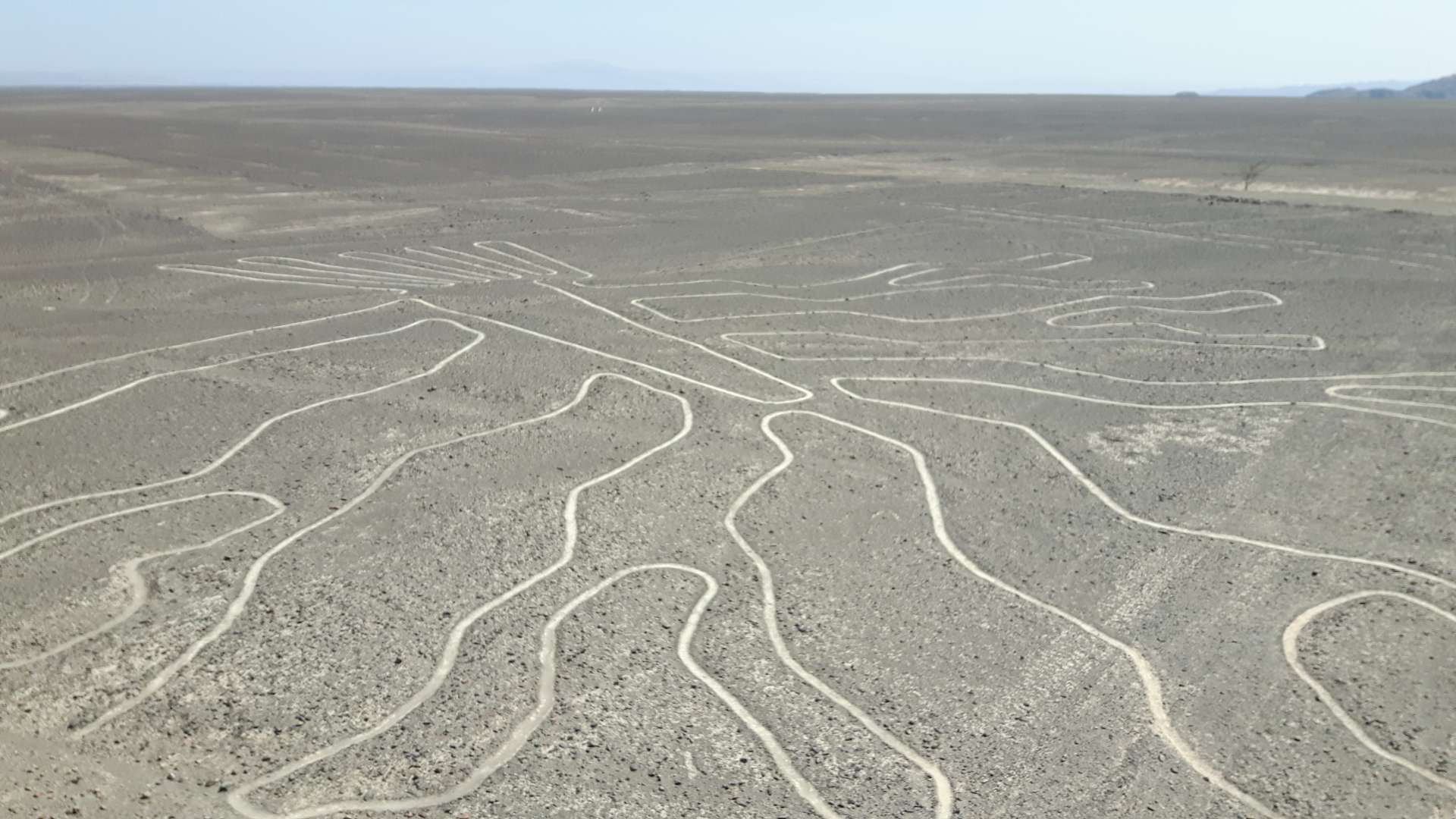
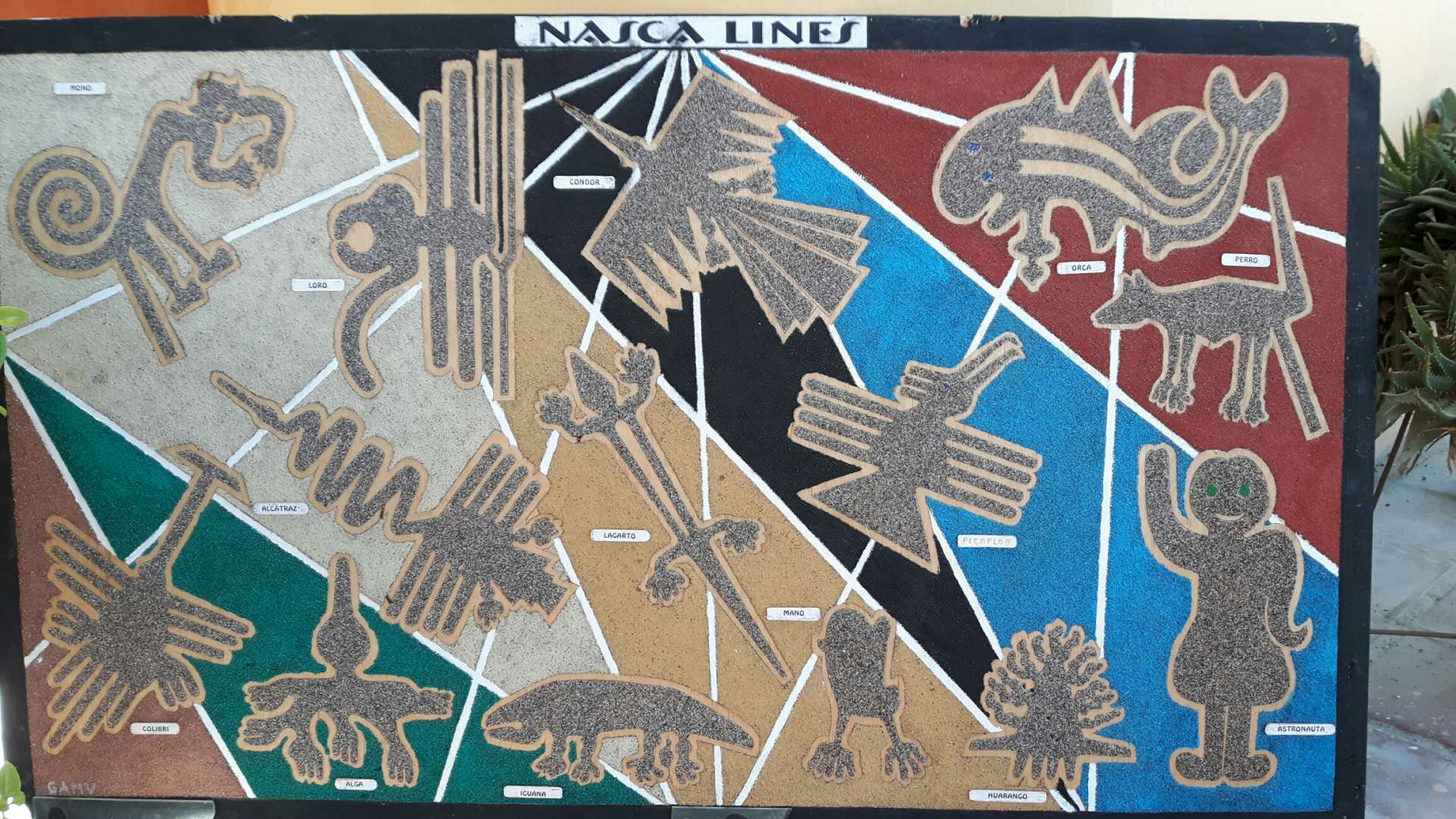
Not only the figures are drawn so precisely - trapezoids and
20 km long and straight lines
And then there's Maria Reiche, a scientist from Dresden who dedicated her entire life to researching the Nasca Lines.
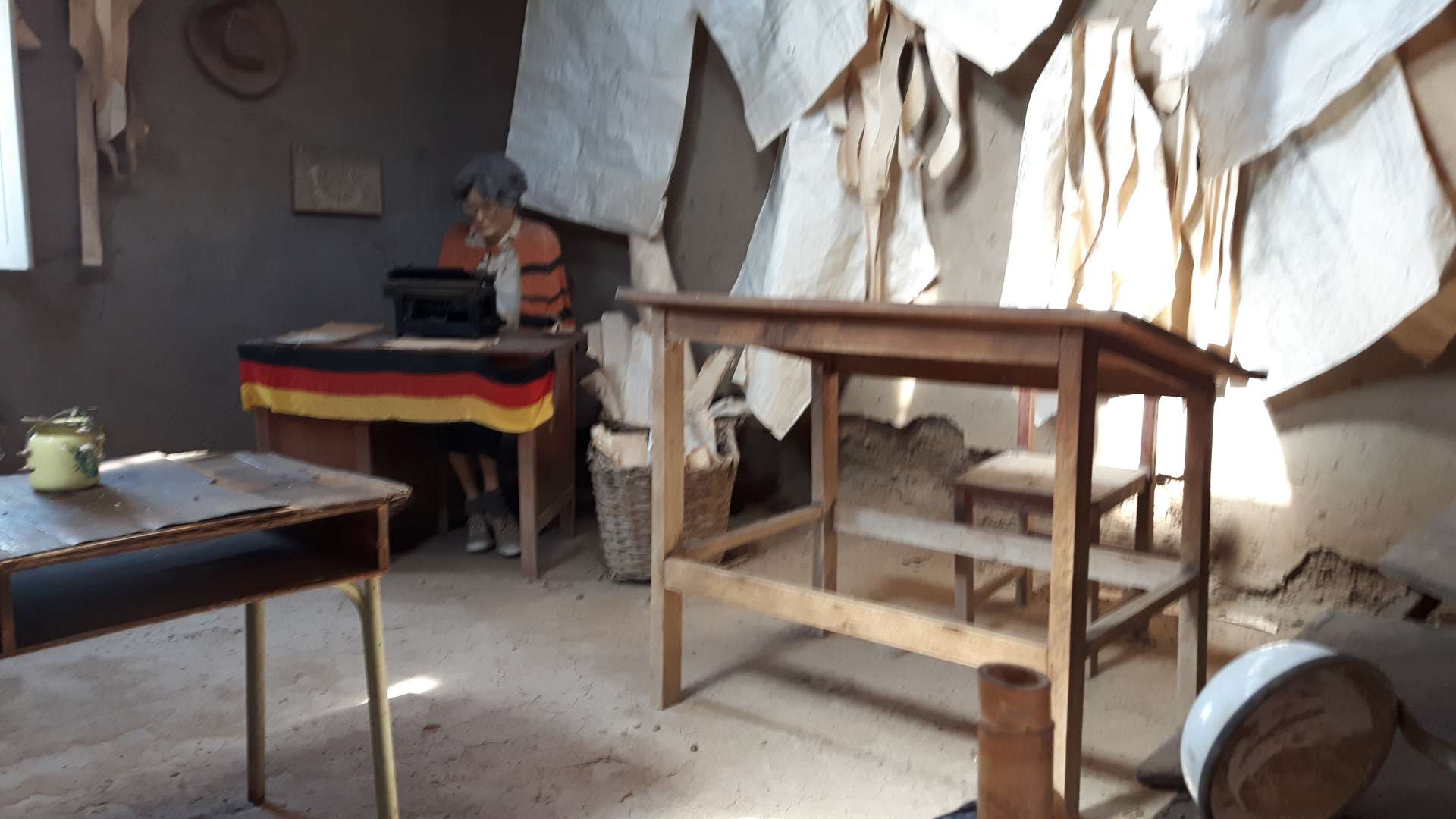
Deep in her research
She believed that they were a large astronomical calendar. The Maria Reiche Museum showcases her study, as well as the tools she used to measure the Nasca Lines. It is thanks to her that the lines were included in the UNESCO World Heritage in 1994. They are even considered the 8th wonder of the world!
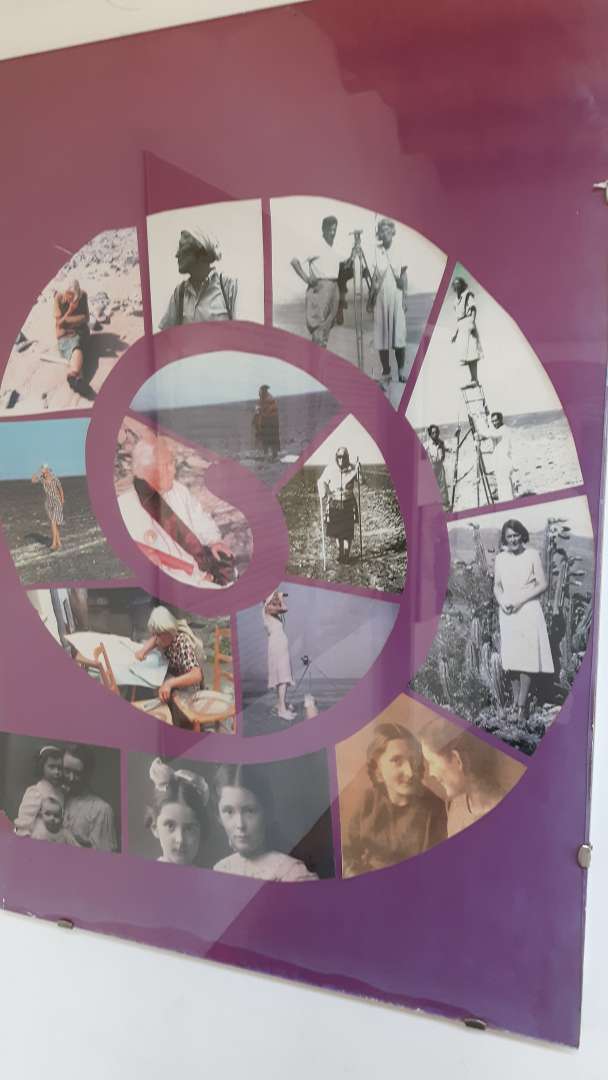
Her life's path...
When I leave the Maria Reiche Museum, there are two women, a man, and the museum guard admiring the Vespa. When the museum employee sees the sticker of the Chilean flag on my wind deflector, he goes inside and gives me the Peruvian flag!
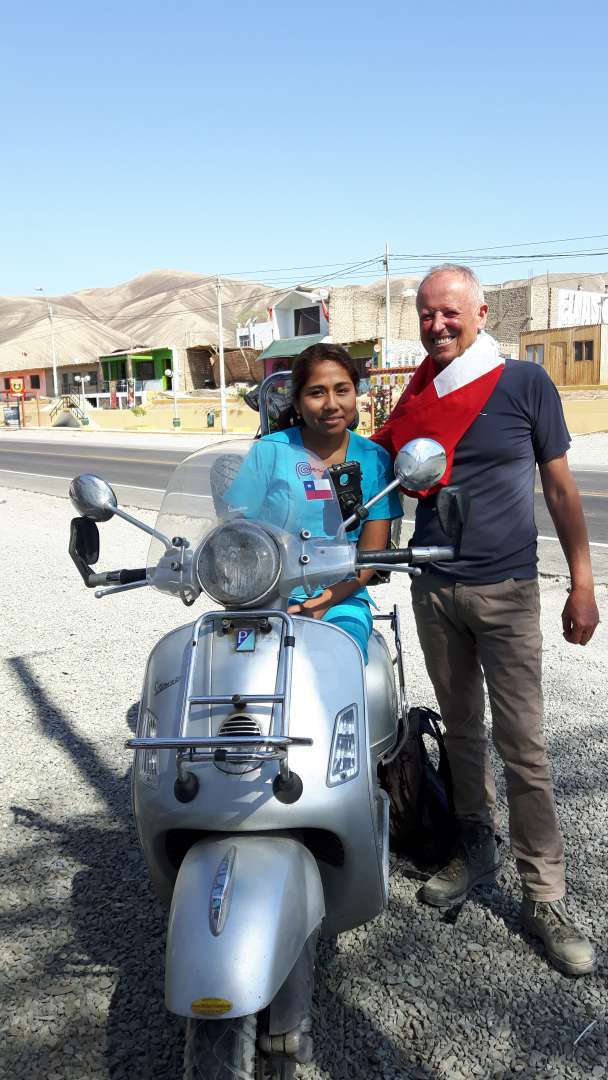
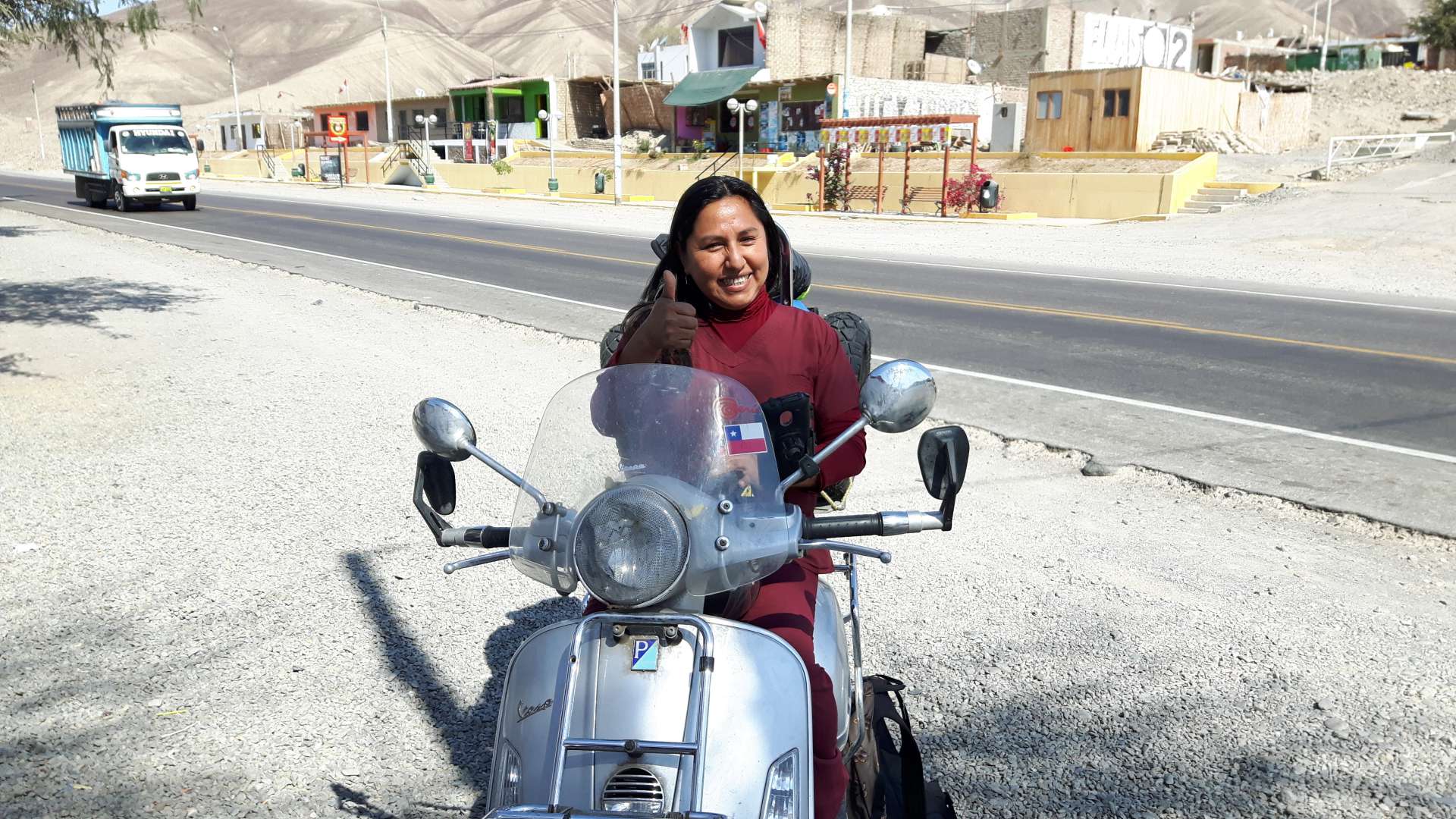
The Vespa exerts a certain fascination...
After returning from the Lines, I buy a belt and admire the constantly changing improvised flair.

Willakuy qillqaman qillqakuy
Kutichiy (1)
Nora
echt wahnsinn die bilder.... und die geben ja nur einen bruchteil von dem wieder wie es in wirklichkeit aussah...
Viaje willakuy Perú
